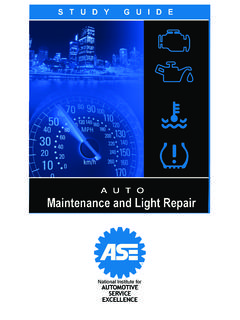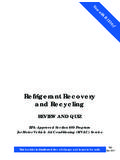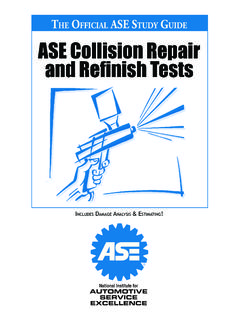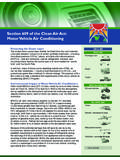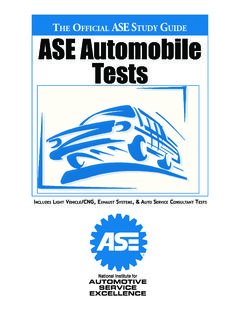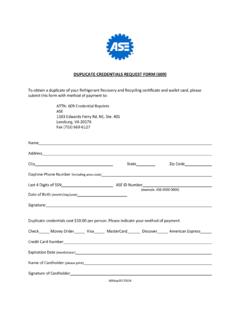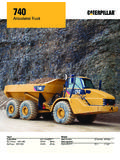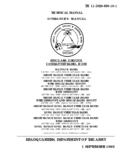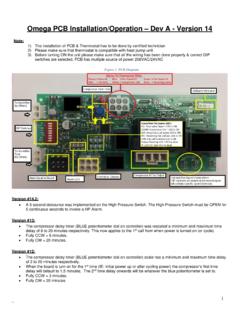Transcription of ADVANCED ENGINE PERFORMANCE SPECIALIST …
1 16. 20. ED. IS. EV. R. ADVANCED . ENGINE PERFORMANCE . SPECIALIST TEST (L1). COMPOSITE VEHICLE TYPE 4. REFERENCE BOOKLET. This booklet is intended only for reference when preparing for and taking the ASE. ADVANCED ENGINE PERFORMANCE SPECIALIST Test. The composite vehicle type 4. powertrain control system is based on designs common to many vehicle manufacturers, but is not identical to any actual production vehicle. Table of Contents 4. 4. 4. 4. CONTROL 4. ENGINE CONTROL MODULE (ECM).. 4. FUEL PUMP CONTROL MODULE (FPCM).. 5. TRANSMISSION CONTROL MODULE (TCM).
2 5. INSTRUMENT CLUSTER MODULE (ICM).. 5. IMMOBILIZER 5. 6. ELECTRONIC THROTTLE CONTROL 6. EXHAUST 6. FUEL DELIVERY 6. IGNITION 7. IMMOBILIZER ANTI-THEFT 7. ON-BOARD REFUELING VAPOR RECOVERY (ORVR) EVAP 7. FUEL INJECTION 8. VARIABLE VALVE LIFT CONTROL 9. VARIABLE VALVE TIMING 9. INPUTS - 10. ACCELERATOR PEDAL POSITION (APP 1 AND APP 2) 10. A/C PRESSURE 10. A/C ON/OFF REQUEST 11. AIR/FUEL RATIO SENSORS (AFRS 1/1 AND AFRS 2/1).. 11. BRAKE PEDAL POSITION (BPP) 11. CAMSHAFT POSITION SENSORS (CMP 1 AND CMP 2).. 12. CRANKSHAFT POSITION (CKP) 12. EGR VALVE POSITION 13.
3 FUEL LEVEL 13. FUEL PRESSURE (FP) 14. FUEL TANK (EVAP) PRESSURE 14. KNOCK 14. HEATED OXYGEN SENSOR (HO2S 1/2 and HO2S 2/2).. 15. IGNITION 15. MANIFOLD ABSOLUTE PRESSURE (MAP) 15. MASS AIRFLOW (MAF) 16. THROTTLE POSITION (TP 1 AND TP 2) 16. PAGE 2 ASE COMPOSITE VEHICLE TYPE 4 REFERENCE BOOKLET. TEMPERATURE 17. TRANSMISSION RANGE (TR) 18. TRANSMISSION TURBINE SHAFT SPEED (TSS) 18. VARIABLE VALVE LIFT SYSTEM 18. VEHICLE SPEED SENSOR (VSS).. 18. OUTPUTS - 19. CAMSHAFT POSITION ACTUATOR CONTROL 19. EVAPORATIVE EMISSION (EVAP) CANISTER PURGE 19.
4 EVAPORATIVE EMISSION (EVAP) CANISTER VENT 19. EXHAUST GAS RECIRCULATION (EGR) 19. FAN CONTROL (FC) 19. FUEL 19. 19. IGNITION 20. MALFUNCTION INDICATOR LAMP (MIL).. 20. STARTER 20. THROTTLE ACTUATOR CONTROL (TAC) 20. TRANSMISSION 20. VARIABLE VALVE LIFT 21. OBD SYSTEM 22. DATA 22. SYSTEM 23. MONITOR READINESS 25. WARM UP 25. 25. DRIVE 25. FREEZE FRAME 25. STORING AND CLEARING DTCS & FREEZE FRAME DATA, TURNING MIL ON & 26. SCAN 26. PIN / COMPONENT CROSS SCAN TOOL DATA ELECTRICAL DIAGRAM ELECTRICAL DIAGRAM ELECTRICAL DIAGRAM ELECTRICAL DIAGRAM SYSTEM CUTAWAY ASE COMPOSITE VEHICLE TYPE 4 REFERENCE BOOKLET PAGE 3.
5 INTRODUCTION. This ASE Composite Vehicle Type 4 was conceived and built by technical committees of industry experts to accommodate high level diagnostic questions on the L1 test. While some aspects of this Composite Vehicle may appear similar to vehicles from a number of manufacturers, it is important to understand this vehicle is a unique design and is NOT intended to represent any specific make or model. This reference document should be used when answering questions identified as Composite Vehicle questions. Note: All testing is performed at sea level unless otherwise indicated.
6 The reference materials and questions for this test use terms and acronyms that are consistent with SAE standards J1930 and J2012. POWERTRAIN. ENGINE . Generic, four-stroke, V6 design. Equipped with four chain-driven overhead camshafts, 24 valves, hydraulic valve lifters, variable intake camshaft timing, and variable intake valve lift. TRANSMISSION. 6-speed, automatic transaxle with overdrive. Controlled by a transmission control module (TCM). 3 planetary gear sets, 5 clutch packs, and a single one-way clutch. 6 forward gears and 1 reverse gear.
7 A torque converter transmits power from the ENGINE to the transmission and is capable of lock-up in 3rd, 4th, 5th, and 6th gears. Contains an electronic pressure control (EPC) solenoid, 5 shift solenoids, and a torque converter clutch solenoid. CONTROL MODULES. ENGINE CONTROL MODULE (ECM). Calculates ignition and fuel requirements, controls ENGINE actuators and provides inputs to other modules to provide the desired driveability, fuel economy, and emissions control. Receives data input from other control modules and sensors. Controls the vehicle's charging system.
8 Receives power from the battery and ignition switch and provides a regulated 5-volt supply for most of the ENGINE sensors. ENGINE control features include coil-on-plug ignition, mass airflow, sequential port fuel injection, variable valve timing, variable valve lift, electronic throttle actuator control (TAC), air/fuel ratio sensors, a data communications bus, a vehicle anti-theft immobilizer system, a natural vacuum leak detection EVAP system and an on-board refueling vapor recovery (ORVR) system. The control system software and OBD diagnostic procedures stored in the ECM can be updated using factory supplied calibration files and PC-based interface software, along with a scan tool or a reprogramming device that connects the PC to the vehicle's data link connector (DLC).
9 Contains a 120 terminating resistor for the data bus. PAGE 4 ASE COMPOSITE VEHICLE TYPE 4 REFERENCE BOOKLET. FUEL PUMP CONTROL MODULE (FPCM). Communicates with the ECM over a Local Area Network (LAN). ECM provides a 5-volt enable signal to the FPCM to enable fuel pump operation: for two seconds with the ignition switch in the RUN position. when the ignition switch is in the START position. when the ENGINE speed (CKP) signal is above 100 rpm. FPCM changes the volume of fuel supplied by the fuel pump by varying the duty-cycle of the voltage supplied to the fuel pump.
10 LOW fuel pump speed command = fuel pump supply voltage duty-cycled at 50 %. HIGH fuel pump speed command = fuel pump supply voltage duty-cycled at 100 %. HIGH fuel pump speed is commanded: during key ON/ ENGINE OFF prime. with the ENGINE cranking. under high ENGINE load. during operation at low charging system voltage. If there is a communication fault on the LAN bus, and the 5-volt enable signal is present at the FPCM, the FPCM will default to HIGH speed fuel pump operation. Actual fuel pump duty cycle is monitored by the FPCM and is reported by the FPCM to the ECM via the LAN bus.
